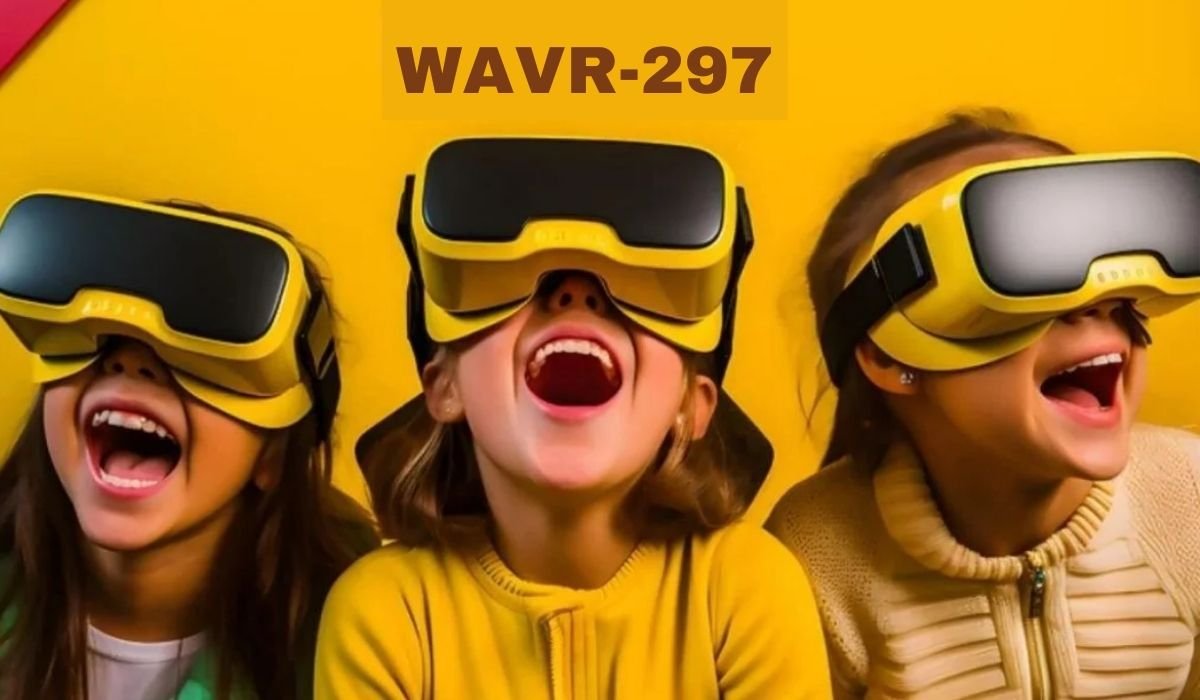WAVR-297 stands at the forefront of a technological revolution, reshaping the realms of virtual reality (VR) and material science. As a dual-purpose innovation, it not only enhances virtual experiences with unprecedented audio immersion but also paves the way for advancements in nanotechnology. This article delves into the complexities and promising future of WAVR-297, offering an accessible guide to its functionalities and potential applications across various industries.
WAVR-297 in Virtual Reality

Overview of WAVR-297 VR Technology
WAVR-297, short for Waveform Augmented Virtual Reality-297, represents a significant leap in VR technology. It combines cutting-edge software with sophisticated hardware to create realistic environments that are enhanced with precise audio effects. This technology allows users to experience virtual worlds with a level of realism previously unattainable, making every sound and interaction within the VR space feel authentic.
Advancements and Features
Accurate Modeling: WAVR-297 is renowned for its ability to replicate real-world environments with astonishing accuracy. It achieves this through the use of advanced algorithms and wave patterns that meticulously simulate how sound travels and interacts within a space. This includes nuances like echoes and vibrations, which are essential for creating a truly immersive VR experience.
Improved Haptic Feedback: The system incorporates sophisticated haptic feedback mechanisms that convey textures and movements more realistically than ever before. This technology lets users feel the environment, whether it’s the rough terrain underfoot or the brush of wind against the skin, enhancing the overall sensory experience in the virtual world.
Increased Customization: WAVR-297 offers extensive customization options, allowing users to tailor their VR environments to their preferences. This includes adjustments to audio effects, lighting, and even the physical laws of the virtual space, providing a personal touch that enhances user engagement.
Challenges and Future Developments
While WAVR-297 has set new standards in virtual reality, it faces challenges like balancing the cost and complexity of VR hardware. Future improvements may focus on making the technology more accessible and enhancing visual components to match the audio quality, broadening its application in fields beyond entertainment, such as training simulations and education.
WAVR-297 in Material Science

The Science Behind WAVR-297
In the domain of material science, WAVR-297 refers to a novel form of carbon nanotube-based aerogel. These nanotubes are woven at an atomic scale to create a mesh that is incredibly strong yet flexible. The material’s microscopic structure gives it unique properties, such as high durability and elasticity, which are ideal for various high-performance applications.
Properties and Benefits
Medical Industry: The flexibility of WAVR-297 makes it ideal for creating medical implants and casts that conform more naturally to the human body. Additionally, its precision allows for the manufacture of nanoscale surgical tools, which can revolutionize how surgeries are performed, making them less invasive and more precise.
Automobile Industry: The material’s robust nature enables it to withstand extreme stress and environmental conditions, making it suitable for use in automotive parts like tires and vehicle frames. This could lead to safer, more durable, and lightweight vehicles.
Infrastructure and Aerospace: In infrastructure, WAVR-297 could be used to develop stronger and more durable building materials, capable of withstanding natural disasters better than traditional materials. Similarly, in aerospace, its strength and lightweight properties could greatly enhance the fuel efficiency of spacecraft and durability against cosmic radiation.
Production Challenges
The primary hurdle in the widespread adoption of WAVR-297 in material science is the complexity of its production. Currently, manufacturing processes are limited to small-scale prototypes due to the high costs and technological demands. Scaling production while maintaining quality and reducing costs remains a significant challenge for future development.
Integrated Impact and The Future

The integration of WAVR-297’s applications in VR and material science promises to create synergies that could fuel further innovations. For instance, its use in VR can be enhanced by its material properties, offering more realistic and responsive environments. Conversely, VR can be used to simulate and optimize the material’s properties before actual production.
Conclusion
WAVR-297 is not just a technological advancement; it is a potential cornerstone for future innovations across multiple sectors. Whether it’s enhancing how we interact with virtual worlds or transforming the materials we use in everyday life, WAVR-297 holds the promise of making our future safer, more efficient, and more immersive.
FAQs About WAVR-297
What is WAVR-297?
WAVR-297, which stands for Waveform Augmented Virtual Reality-297, is a dual-purpose technology with applications in virtual reality and material science. In VR, it enhances audio and sensory experiences, while in material science, it refers to a newly developed carbon nanotube-based aerogel.
How does WAVR-297 enhance virtual reality experiences?
WAVR-297 enhances VR by using advanced algorithms to create highly accurate and realistic soundscapes and environments. It also incorporates improved haptic feedback technology, allowing users to feel and interact with the virtual environment in a more realistic manner. This leads to deeper immersion and a more engaging experience.
What are the material science applications of WAVR-297?
In material science, WAVR-297 is used to create a strong yet flexible mesh of carbon nanotubes, which can be applied in various industries. This includes creating more durable medical implants, lighter and stronger materials for the automotive and aerospace industries, and innovative building materials for the construction sector.
What industries can benefit most from WAVR-297?
WAVR-297 has potential applications across multiple industries. In addition to the entertainment and gaming industries, it can significantly impact the medical, automotive, aerospace, and construction industries due to its enhanced material properties and VR capabilities.
What are the challenges facing the development of WAVR-297?
The main challenges include the complexity and cost of production, especially for the material science applications. Producing carbon nanotube-based materials on a large scale is currently challenging and expensive. In VR, challenges revolve around ensuring compatibility with existing systems and balancing the cost of advanced hardware.
Is WAVR-297 compatible with existing VR and AR hardware?
The compatibility of WAVR-297 with existing VR and AR systems varies. Efforts are ongoing to ensure that future iterations of WAVR-297 will be more universally compatible with a broad range of existing and future hardware.
Can WAVR-297 be used in medical applications?
Yes, WAVR-297’s flexibility and strength make it suitable for various medical applications, including the production of nano-sized surgical tools and more adaptive medical implants and casts that can conform more naturally to the human body.
What are the future prospects for WAVR-297?
The future of WAVR-297 looks promising, with ongoing research focused on overcoming production challenges and expanding its range of applications. As technology advances, WAVR-297 could play a critical role in driving innovations that make our interactions with technology more immersive and the materials we use more efficient and sustainable.

















Leave a Reply